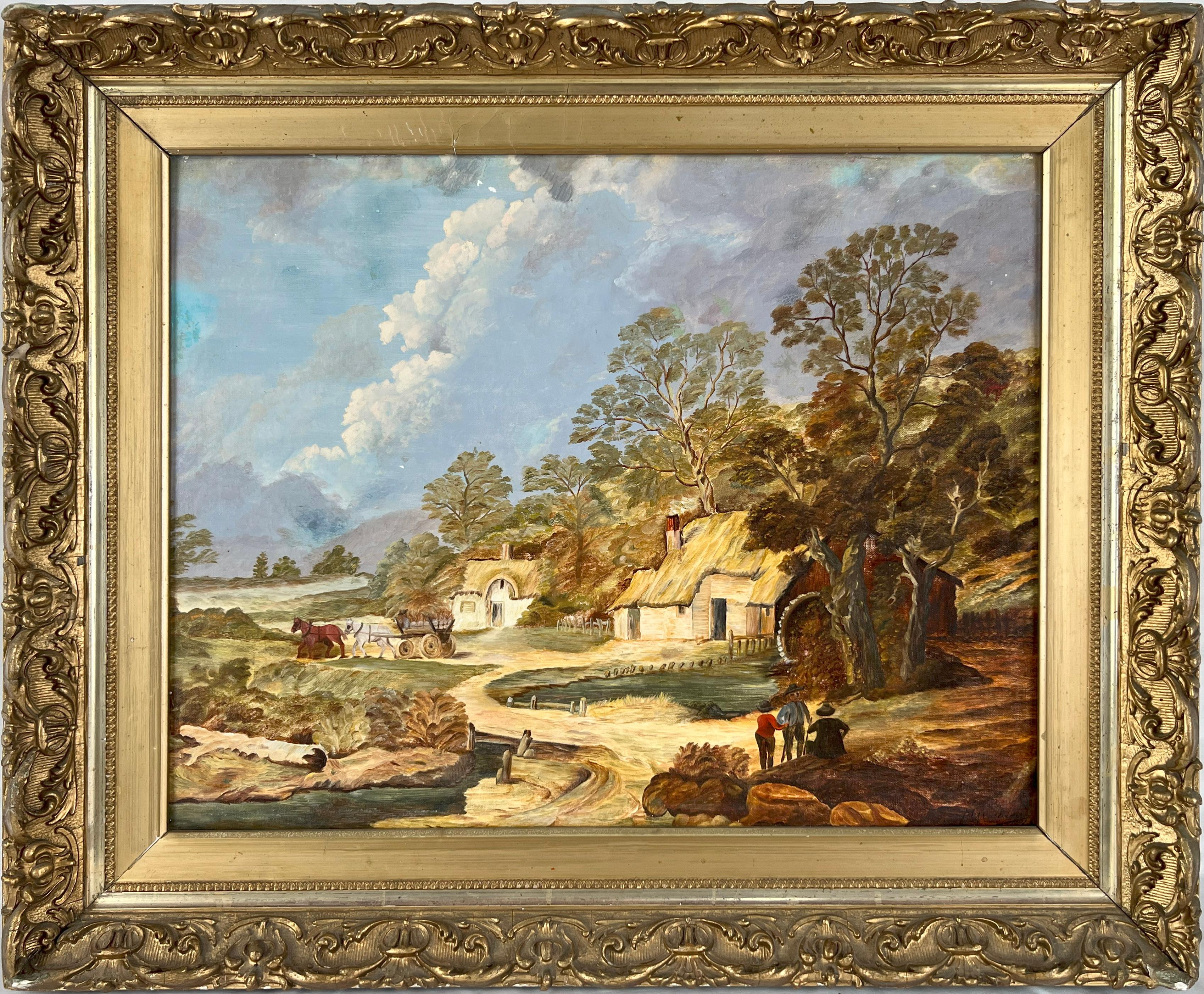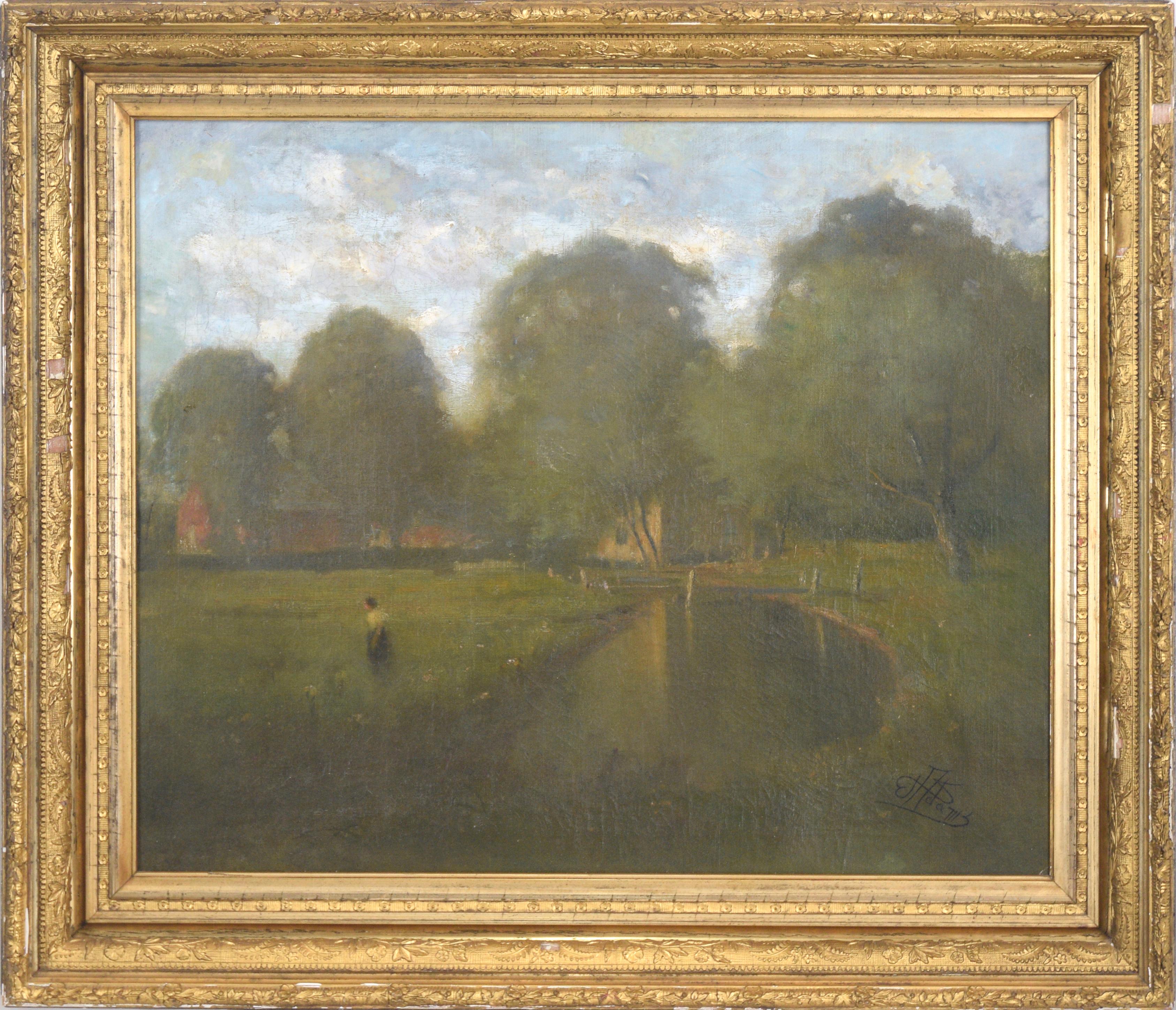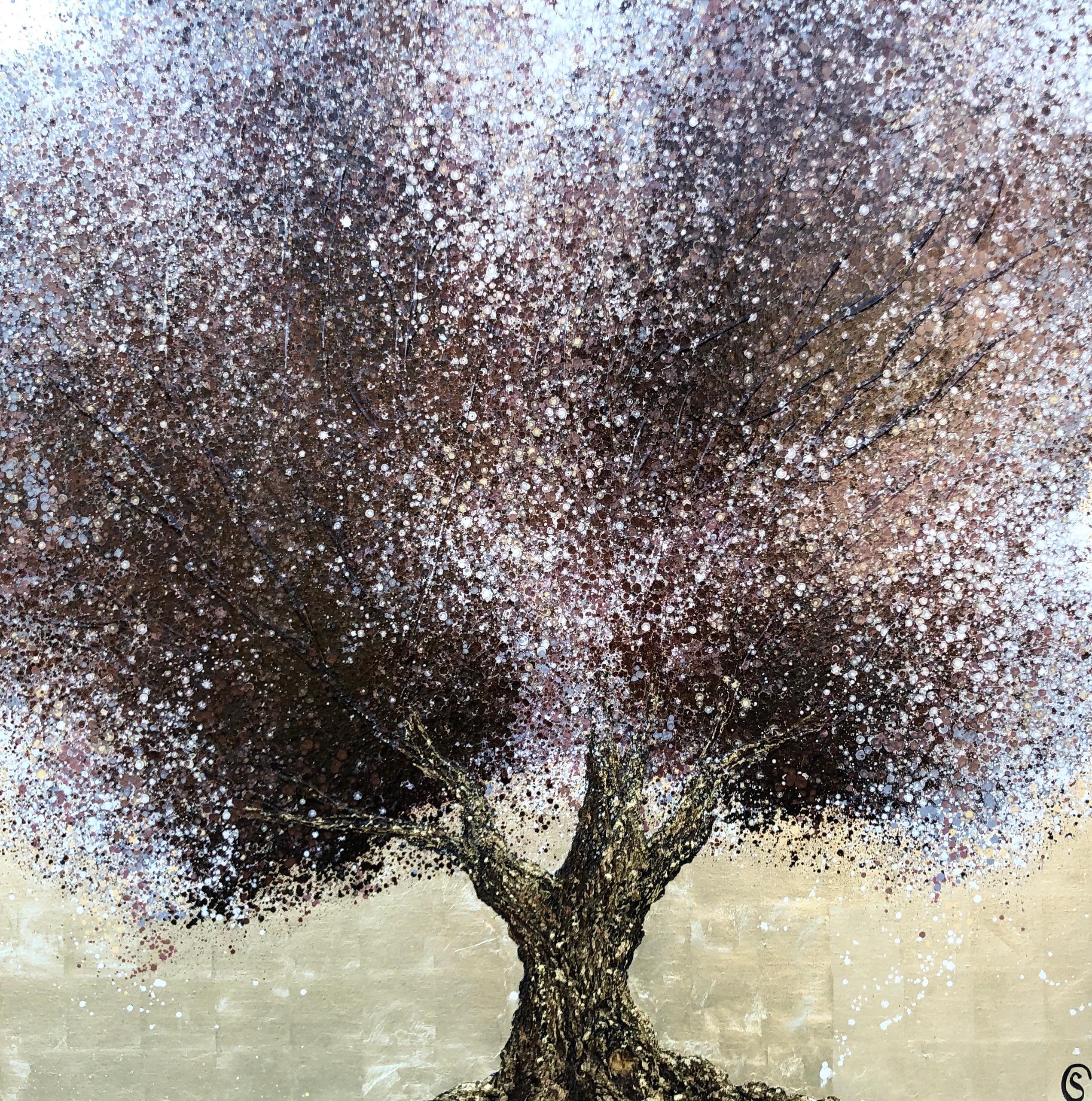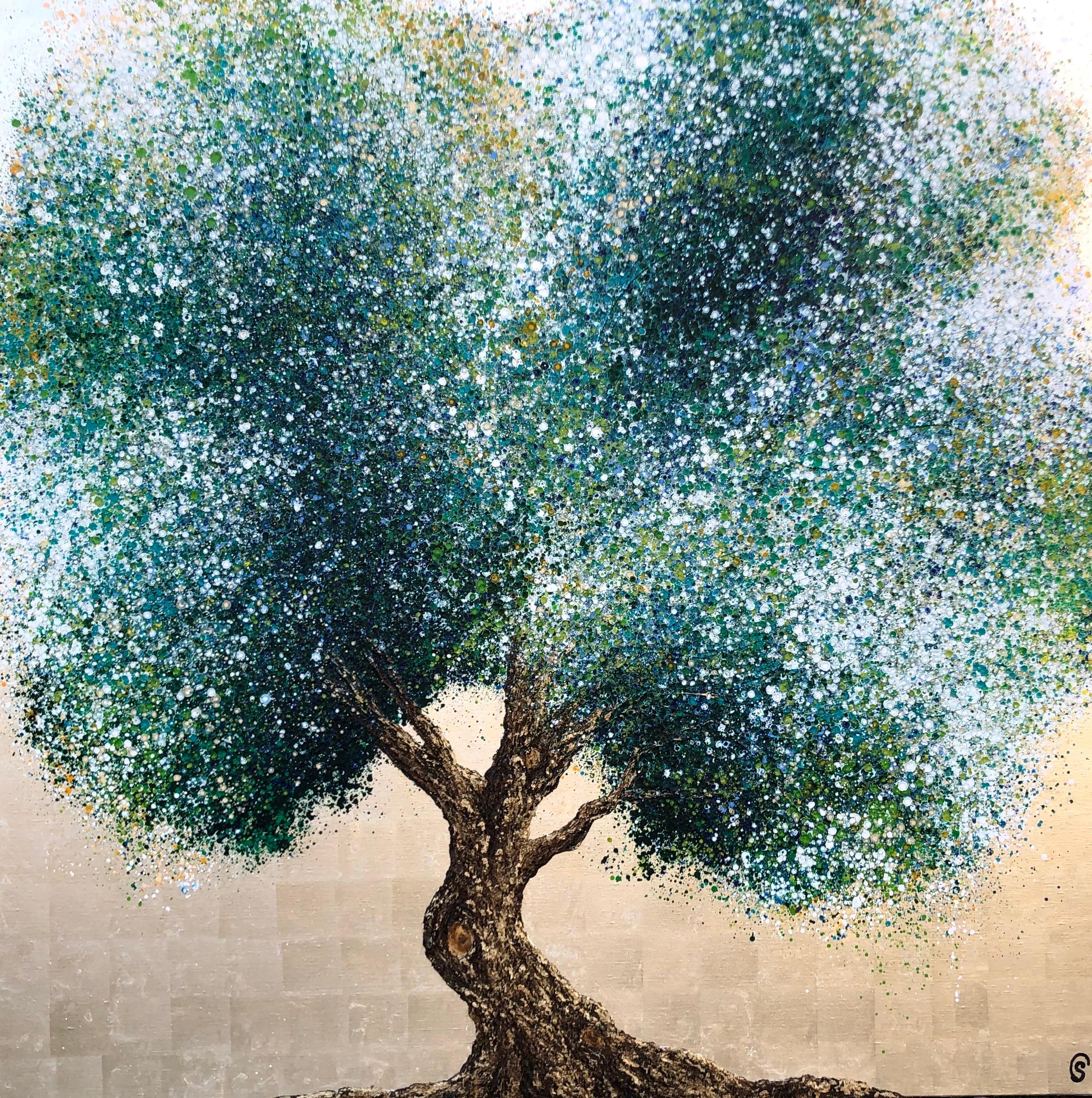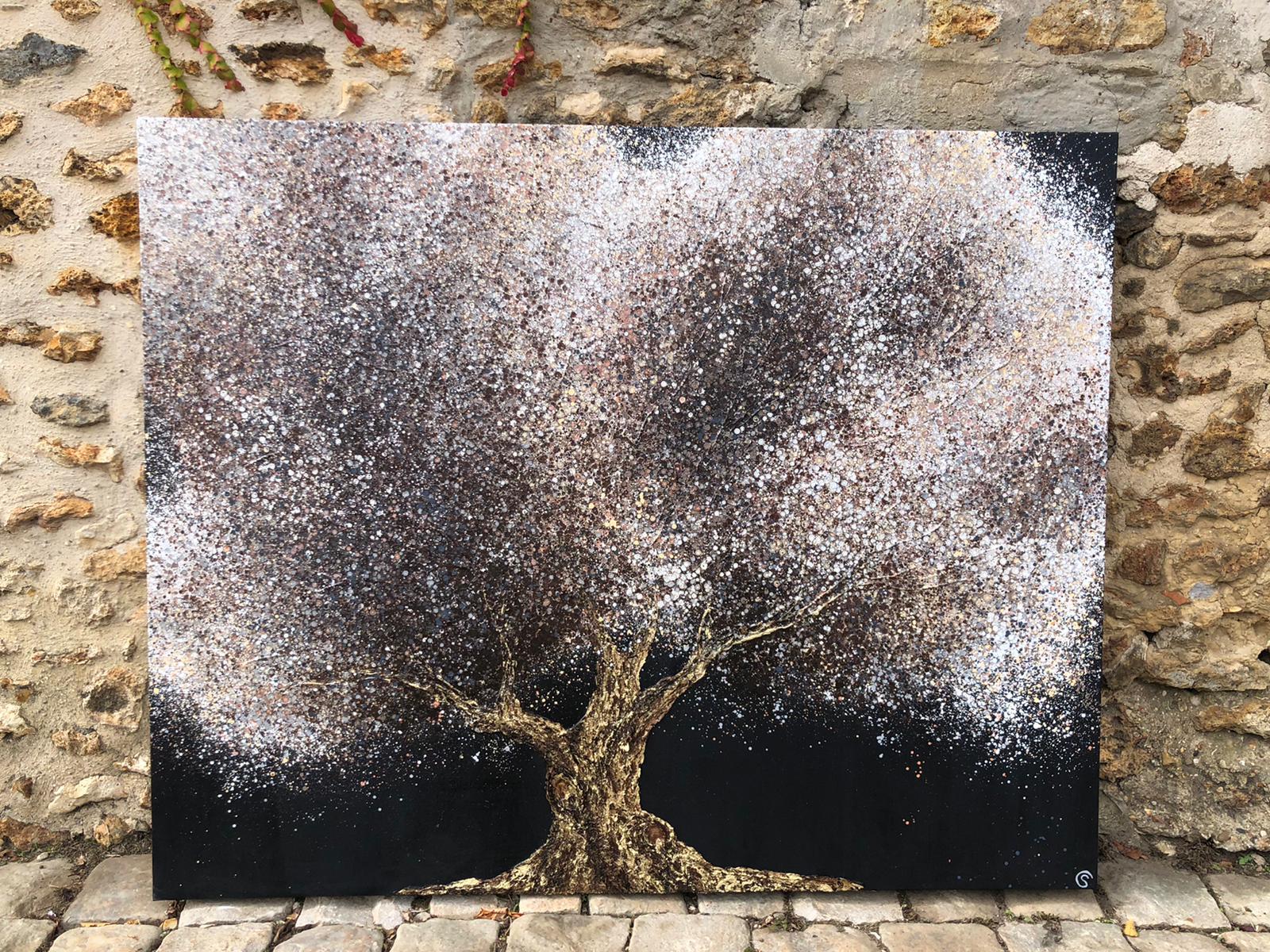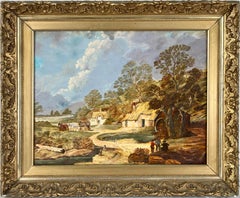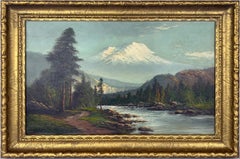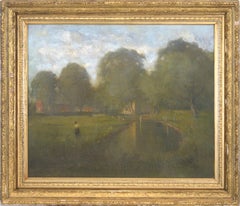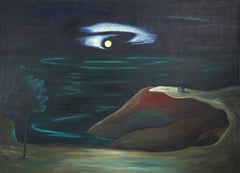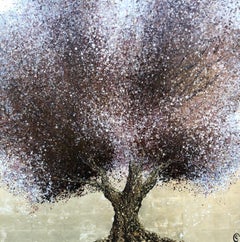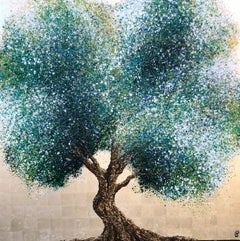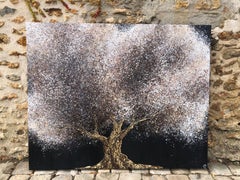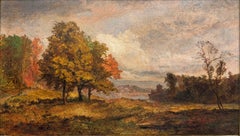Items Similar to 1903 Walpi Hopi Village, Arizona First Mesa Landscape circle of Elmer Wachtel
Want more images or videos?
Request additional images or videos from the seller
1 of 10
1903 Walpi Hopi Village, Arizona First Mesa Landscape circle of Elmer Wachtel1903
1903
About the Item
Walpi Hopi Village, Arizona First Mesa Landscape by Marion Kavanaugh Wachtel. Significant southwestern painting of Hopi at Walpi Mesa in Arizona attributed to Marion Kavanaugh Wachtel (American,1876-1954), c. 1903. Auction record high for the artist is $99,000, works of this type and quality sell at auction for $25,000-$70,000. This painting is one of four paintings of the Hopi at Walpi painted by Wachtel in 1900-1905. See last image for variant of painting with same horse, rider and figure on stairs. Unsigned. Condition: Very good; minor craquelure upper left corner. Image size: 24"H x 28.50"W. Presented in giltwood frame size: 30"H x 34"W x 2"D.
Provenance: In personal collection of this art dealer for 27 years; purchased from art dealer Johannes Schot in 1990, whom acquired it in a Southern California Pasadena estate in 1990. We have included two images (only) of examples of the Hopi Village, one is a photograph and and the other is another painting by the artist of the same scene.
Marion Kavanaugh Wachtel (1876-1954) Landscape painter. Born in Milwaukee, WI on June 10, 1876 into an artistic family. Marion’s mother was an artist and her great grand-father a Royal Academician in London. She studied at the Art Institute of Chicago under Vanderpoel and in New York City with William M. Chase.
For several years she taught at the AIC and established a reputation in Milwaukee as a competent portrait painter. A commission from the Sante Fe Railroad Company to paint scenes in their ticket offices brought her to California. Arriving in San Francisco in 1903, she became a pupil of William Keith. Learning of her proposed move to Southern California, Keith suggested that she contact Elmer Wachtel. A romance blossomed and they married in 1904.
After Elmer’s death in 1929, she was inactive for a few years but continued to live in their Arroyo Seco home; by the early 1930s she was painting and exhibiting again. Mrs. Wachtel worked exclusively with watercolors until after her husband’s death and then used both watercolor and oil. Regular exhibitions with both the New York and California Watercolor Societies made her paintings popular on both coasts. Her early works are tighter and more meticulously detailed than those produced after 1920. After her marriage, the artist dropped the "u" in her surname and spelled it "Kavanagh". She died at her home in Pasadena on May 22, 1954.
Member: California Watercolor Society; Academy of Western Painters, LA; Pasadena Society of Painters; Friday Morning Club, LA; New York Watercolor Club; Ten Painters of LA.
Exhibited: LACMA 1915, 1917; Stanford University, 1936. Works held: Laguna Museum; California State Building, LA; Woman’s Club, Hollywood; Cedar Rapids Museum; Freemont High School, LA; Gardena (CA) High School; Friday Morning Club, LA.
- Attributed to:Marion Kavanaugh Wachtel (1876 - 1954, American)
- Creation Year:1903
- Dimensions:Height: 30 in (76.2 cm)Width: 34 in (86.36 cm)Depth: 2 in (5.08 cm)
- Medium:
- Movement & Style:
- Period:
- Condition:Auction record high for the artist is $99,000, works of this type and quality sell at auction for $25,000-$70,000. Very good; some minor craquelure in upper left corner.
- Gallery Location:Soquel, CA
- Reference Number:Seller: JT-D3814*1stDibs: LU5422183993
About the Seller
5.0
Platinum Seller
Premium sellers with a 4.7+ rating and 24-hour response times
Established in 1986
1stDibs seller since 2014
2,911 sales on 1stDibs
Typical response time: <1 hour
- ShippingRetrieving quote...Shipping from: Soquel, CA
- Return Policy
Authenticity Guarantee
In the unlikely event there’s an issue with an item’s authenticity, contact us within 1 year for a full refund. DetailsMoney-Back Guarantee
If your item is not as described, is damaged in transit, or does not arrive, contact us within 7 days for a full refund. Details24-Hour Cancellation
You have a 24-hour grace period in which to reconsider your purchase, with no questions asked.Vetted Professional Sellers
Our world-class sellers must adhere to strict standards for service and quality, maintaining the integrity of our listings.Price-Match Guarantee
If you find that a seller listed the same item for a lower price elsewhere, we’ll match it.Trusted Global Delivery
Our best-in-class carrier network provides specialized shipping options worldwide, including custom delivery.More From This Seller
View AllHudson River School Style - The Homestead and Grist Mill 1942
By A. Mathieu
Located in Soquel, CA
Hudson River School Style - The Homestead and Grist Mill 1942
In the Hudson River School style by A (K) Mathieu (American, 19th-20th C). Harvest time at the Homestead with a hay wago...
Category
1940s Hudson River School Figurative Paintings
Materials
Oil, Illustration Board, Stretcher Bars
Mt Shasta Spring Stroll on the River Beneath the Mountain Original Oil on Linen
Located in Soquel, CA
Mt Shasta Spring Stroll on the River Beneath the Mountain Original Oil on Linen
A solitary hiker on a trail with Northern California's Mt. Shasta in the distance by Joseph John Engl...
Category
Late 19th Century Hudson River School Landscape Paintings
Materials
Linen, Oil
Late 19th Century Tonalist Landscape -- Afternoon by the Pond
Located in Soquel, CA
Gorgeous tonalist oil painting woman walking in field by pond with home in background by Willis Seaver Adams (American, 1844-1921), circa 1880. Trees and an amazing sky in the background add depth and interest to this beautiful piece. Signed "W. S. Adams" lower right corner. Condition: Previous restoration includes relining of canvas. Frame is vintage gilt molded and wood frame and shows previous repair of molding losses. Image size: 20"H x 24"W.
Auctions records for the artist exceed $6,000.
Willis Seaver Adams was known for his landscapes of the Connecticut River Valley. A relative recluse for much of his artistic life, his loneliness can be seen in much of his works. Oil miniatures were the focus for almost all of his later works. He is credited with over 425 oils, watercolors, and drawings.
Willis Seaver was born in 1844 on a farm in Suffield, near the Connecticut River. He intermittently attended the Suffield Academy, and always wanted to be a painter. A wealthy doctor became his patron, and financed his studies in 1868 at the Royal Academy in Antwerp. When the doctor passed away, Adams returned home and struggled to make a living painting. After working for a photographer for three years, he opened his own studio.
Adams helped organize Cleveland's first watercolor exhibit in 1876. Soon thereafter, he completed a portrait of Rutherford B. Hayes, then governor of Ohio, prior to his becoming President of the United States. This portrait enhanced Adams notoriety.
In 1878, Adams traveled to Italy where he opened a studio in Venice, and became friendly with neighbor James Whistler. Prior to returning to Springfield, Adams lived in Florence, Italy for three years. He returned to became an instructor for the Springfield Art Association, and began to exhibit his works at the galleries of James D. Gill. His first one-man exhibit was held there in 1894. Other successful exhibitions took place in Chicago, New York, and Boston. Although his works garnered respectable prices and reflected his success, Adams felt he was due more recognition.
In 1906, he moved to Greenfield, Massachusetts and converted a barn into a studio. There, he fell into relative obscurity, accompanied mainly by his dog, Collie. In 1921, Adams passed away.
Examples of Willis Adams works can be seen at the Kent Memorial Library, the Wadsworth Atheneum, and the Suffield Academy. Several Suffield residents are thought to own Adams paintings.
Category
1880s Hudson River School Landscape Paintings
Materials
Linen, Oil
$4,000 Sale Price
20% Off
Surreal Full Moon Hawaii Cliff House Nocturnal Hawaiian 1940s Landscape
By Marguerite Blasingame
Located in Soquel, CA
Surreal Full Moon Hawaii Cliff House Nocturnal Hawaiian 1940s Landscape
Symbolic and surreal mid century nocturnal landscape of a lone house on a s...
Category
1940s Surrealist Figurative Paintings
Materials
Linen, Oil, Stretcher Bars
Coast Guard Cutter with Cannons Spanish-American War Maritime Original Oil
Located in Soquel, CA
Turn of 20th Century Spanish-American War Coast Guard Cutter with Cannons Original Oil Painting
A fine example of maritime ship portraiture oil painting of a Coast Guard Cutter with cannons under sails during the Spanish American War by renowned Nautical British/American painter Captain William Lindsay Challoner (British/American 1852-1901), 1901. Auction values Luminous and striking painting with seaman unfurling sails heading into rough waters. Challoner served as captain of a naval vessel (Coast Guard Cutter) during the Spanish-American War. Here he is depicted on the deck of the ship while seamen scramble aloft on the rigging during a gale. The captain stands tall before the cannons at the ready to fend off intruders. His paintings are rare and highly prized by museums and Nautical collectors alike.
Signed: Lower right corner "W. Challoner"
Not framed
Dated: "1910"
Provenance: A local Monterey Bay area estate find.
Condition: Professionally restored (conservation report available)
Image size: 27.75"H x 47.38"W
William Lindsay Challoner lived the peripatetic life of a mariner, spending much of his time at sea, and in ports such as New Orleans and San Francisco, California. He was born in Bedminster, England, and attended the York Naval Academy. In 1880, Challoner married Mary Cadogan. That same year, the couple immigrated to Argentina and then New Orleans. They had one son, William Lindsay Challoner, Jr.
Lloyd’s Lists record Challoner as master aboard J.P. Macheca, a “Clipper Schooner” running bananas from Jamaica during the mid-1880s. The clipper also raced at the Southern Yacht Club in New Orleans. As is often the case, Challoner’s middle name is misspelled as “Lindsey” in J.P. Macheca & Co. records. He is also said to have served as captain for vessels in the Morgan Line.
Painting was at first an avocation for Challoner, but his draftsmanship and handling of paint suggest academic training. He may also have learned to make precise topographical drawings at the York Naval Academy. Many of his ship portraits are in the English tradition, notably followers of Samuel Walker, a leading English maritime artist in the 1850s. Like his Liverpool counterparts, Challoner used receding linear and atmospheric perspective to focus on the crisp portraits of specific ships. At their best, his canvases are highly finished, a style that imitates the Venetian tradition of topographical city views associated with Giovanni Antonio Canal, also known as Canaletto. However, Challoner’s restrained bravura paint handling also may bear witness to the influence of the French Impressionists.
Challoner seems to have arrived in New Orleans about 1880. He advertised in the press and exhibited at the Creole Art Gallery and Grunewald’s Music Store in New Orleans. In 1887, Challoner moved to San Francisco, where he exhibited his maritime scenes at the Mechanic’s Institute and became a U.S. citizen. He may have been back in New Orleans after 1891, and served as captain of a naval vessel during the Spanish-American War. His art clients tended to be men involved in the shipping industry—ship owners and commission merchants, along with professional clubs and maritime benevolent societies.
Challoner’s principal competition in New Orleans was August Norieri, a talented ship portraitist and painter of marines. While Norieri lived hand-to-mouth, Challoner drew a handsome salary working as a ship captain, presumably until shortly before his death at the age of 49. Securing the commission for painting the newly founded New Orleans Yacht Club suggests that Challoner was held in higher regard as an artist than Norieri. The two artists together met the market demand for ship portraiture and marine views in the port city, as had Edward Arnold and James Guy...
Category
Early 1900s American Impressionist Figurative Paintings
Materials
Linen, Oil, Stretcher Bars
Moonlit Houseboats at Greenbrae Lagoon- Rare Nocturnal L/S, Charles Rollo Peters
By Charles Rollo Peters
Located in Soquel, CA
"Houseboats in Moon Light", a rare early 20th century tonalist nocturnal harbor landscape scene at Greenbrae Boardwalk, San Rafael, California by Charles Rollo Peters (American, 1862-1928), 1912. Inscribed "Charles Rollo Peters Greenbrae, 1912" in the lower left corner. Presented in an antique giltwood frame. Image size: 19.5"H x 25.25"W
Auction record high for this noted Nocturnal and Tonalist artist is $58,000. Rare works like this one range $30,000-$35,000.
(Note: the photos showing the inscribed signature have been adjusted to show contrast and the artists inscribed signature in other photos enhanced by acrylic over inscription in the oil paint for visibility). Although not noted on verso, the title is taken from two others done the same year at Greenbrae Boardwalk near San Rafael, California.
Charles Rollo Peters (American, 1862-1928), called "The Poet of Night", is best known for his Tonalist landscapes, especially nocturnes, with much of his subject matter being scenes around his home in Monterey, California. James McNeill Whistler, who promoted the Tonalist aesthetic in Europe, was a major influence on his painting, and "is reported to have said that Peters was the only artist other than himself who could paint nocturnes." (Gerdts)
As Peters matured, his life became increasingly tumultuous, but the one stable part of his existence was his painting. He continued to pour his emotions into his work, creating lonely, mysterious nocturnes with a palette of deep blues and blacks. The scenes were invariably dotted with a speck of light emanating from the moon or a lighted window. His landscapes usually displayed a more prominent sky view and often included a winding path or road trailing off in the distance.
Peters was born in San Francisco in 1862 to a wealthy family, and in San Francisco attended Bates Private School for Boys and the City College, where his talent for sketching and painting became obvious and was encouraged.
After graduation from the College, he spent time as a commercial artist, but this pursuit did not hold his interest. In the mid 1880s, he began to study privately with Jules Tavernier and also attended classes with Virgil Williams and Christian Jorgensen at the California School of Design. During this period, he painted Bay-Area scenery.
In 1886, he began a four-year period of study and travel in Europe, enrolling in Paris at the Ecole des Beaux-Arts and the Academie Julian. His teachers were Jean-Leon Gerome and Fernand Cormon.
In San Francisco, where he returned in 1890, he met and married Kathleen Mary Murphy, and the couple immediately departed for an extended trip to England and France. Peters painted the countryside and produced numerous landscape paintings, especially moonlit views of Brittany and Paris---his first nocturnes, encouraged by the aesthetic of Whistler, whose influence was pervasive in England and France.
Upon his return to California about 1895, Peters held a large show in San Francisco and was able to sell many of his works. Soon after, he and his family relocated to Monterey, California where Peters became interested in California adobe ruins and missions as subjects for his paintings. Night paintings with rich blues highlighted by moon light became his signature work.
Like most Tonalists, he painted in his studio. It was written of him that Monterey residents often saw him "wandering about in the semi-darkness, taking down notes here and there, studying the different phases of light, and creating a vivid mental picture of the scene he wished to paint." (Lowrey 158)
In 1899, he made a tour with his collection of paintings through Chicago, Maine, Long Island, and New York City where he held a solo exhibition at the Union Club and received very favorable publicity. One reviewer of the Union Club work wrote: "The artist has studied the atmospheric effect of the night to good purpose, and in the representation of the silvery gray of moonlight he has arrived at singular proficiency."
Peters returned to Monterey in 1900, and purchased thirty acres of land where he built an estate. He exhibited in the annual exhibitions of the San Francisco Art Association and the Bohemian Club. Along with William Keith, Xavier...
Category
1910s Neo-Expressionist Landscape Paintings
Materials
Linen, Oil, Stretcher Bars
You May Also Like
Olivier de Provence 11- An Oil painting on Gold Leaf
Located in New York, NY
This is a unique painting. It is an oil painting on 22 carat gold leaf gilded on a canvas.
CS Art comprises of two artists, one French, the other Norwegian. Th...
Category
2010s Contemporary Figurative Paintings
Materials
Gold, Silver, Foil, Gold Leaf
Chene de Versailles 6 - An Oil Painting on Gold Leaf
Located in New York, NY
This work is a unique piece. It is an oil painting on linen canvas gilded with 24 carat gold leaf.
CS Art comprises of two artists, one French, the other Norwe...
Category
2010s Contemporary Figurative Paintings
Materials
Gold, Silver, Foil, Gold Leaf
Olivier de Provence 5 - An Oil painting on Canvas
Located in New York, NY
This is a unique painting. It is an oil painting on 22 carat gold leaf gilded on a canvas.
CS Art comprises of two artists, one French, the other Norwegian. Th...
Category
2010s Contemporary Figurative Paintings
Materials
Gold, Silver, Foil, Gold Leaf
"An Autumn Landscape" Jasper F. Cropsey, Hudson River School, Fall Landscape
By Jasper Francis Cropsey
Located in New York, NY
Jasper F. Cropsey
An Autumn Landscape
Signed and dated J.F. Cropsey 1898
Oil on canvas
14 x 24 inches
Provenance
Private Collection Texas, acquired in the early 1900s
Thence by desc...
Category
1890s Hudson River School Landscape Paintings
Materials
Canvas, Oil
Pleasant Thoughts oil painting by Arthur Fitzwilliam Tait
By Arthur Fitzwilliam Tait
Located in Hudson, NY
This painting is listed in the W.H. Cadbury and H.F. Marsh book Arthur Fitzwilliam Tait: Artist in the Adirondacks, Newark, Delaware, 1986, no.59.36t. It is hand-signed "AF Tait...
Category
1850s Hudson River School Figurative Paintings
Materials
Canvas, Oil
"Sunset, Indian Summer" DeWitt Clinton Boutelle, Hudson River School Landscape
Located in New York, NY
DeWitt Clinton Boutelle
Sunset, Indian Summer, 1848-49
Signed and dated lower left
Oil on canvas
12 x 16 inches
DeWitt Clinton Boutelle was born in Troy, New York. He moved to Phil...
Category
1840s Hudson River School Figurative Paintings
Materials
Canvas, Oil
